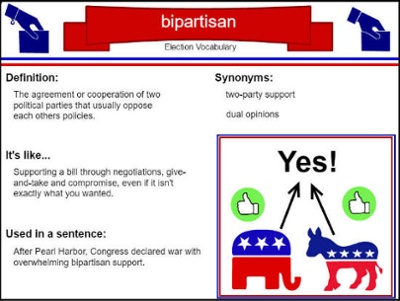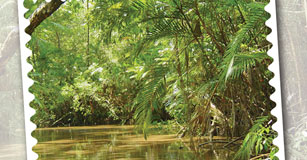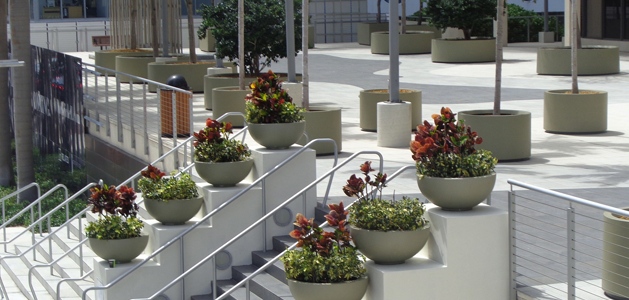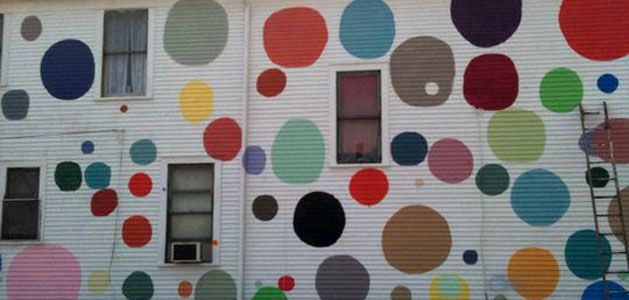Visual Vocabulary
Students create vocabulary posters or trading cards that use images to help other students master the meaning of new words.
Apps: Wixie®

Task
When you are reading or learning new vocabulary, a picture that provides a connection to the word can help you better remember the meaning of the word. In this project, your class will create a poster or set of visual vocabulary trading cards that you will publish and share to help other students master essential academic vocabulary.
Engage
When a word is associated with something you can visualize, it is easy to remember. For example, think of the word turtle. See how fast an image of a turtle came to your mind?
Further connecting that image to synonyms, antonyms, non-examples, and contexts helps them become more sophisticated users of vocabulary.

Start by modeling strategies students can use when they encounter a word they do not know. For example, when you are reading aloud to your class and you encounter a word you think students may not know, ask them to guess at it’s meaning. Work together to identify a list of strategies they use, such as:
- If someone else knows the meaning, they can ask a friend (expert).
- If they can think of a word similar this one, they can use a word’s root to find meaning.
- If other words around it provide clues to its meaning, they can look at context.
- If they can’t figure it out, they can look up the word in a dictionary.
Encourage students to write down new words they encounter as they are reading. When you have a good list of these words, practice the strategies above to explore the meaning (and spelling) of each word.
As students internalize the strategies to master new vocabulary, let them know you are putting their new skills to work by having them create a set of trading cards to help others learn new vocabulary!
Create
Decide as a class what things could be added to a poster or trading card to make it successful. Work should contain a visual image and definition, but students may also decide it would be helpful to include synonyms, antonyms, usage in a sentence, non-examples, and more.
If you have seen your students with trading cards for sports, Pokemon, or Mythomagic, ask them to share information about the features these cards contain. If your students love data, use this to engage them in making trading cards for vocabulary. For example:
- How often is the word found?
- By what grade should they know this word?
- What subjects use this word?
Students might even want to make a game out of the project by assigning points for how valuable to the word is, similar to letters in scrabble, based on data above.
Work together to determine the components your class wants to include on the poster or trading card. You may even want to create a template in Wixie or Google Slides so that the end product has a consistent design.

Distribute vocabulary words to individual students or small teams.
Students can use paint tools to create their own illustration, use a digital camera to capture an image, or search the Web, or Pics4Learning.com to locate an appropriate visual to support vocabulary acquisition.
While the process of creating the poster or trading card will have the biggest impact on each student’s ability to internalize and remember vocabulary terms, be sure to publish and hand posters on the wall or print and share trading cards. After all, research has proven that students are much more motivated to work harder on projects if they know their work will have an audience.
If you are using a publishing tool like Wixie, it is easy to print student work at postcard or trading card size and choose the Repeat Page option so that multiple copies of the same image appear on one page.
Share
If students created posters, print them and display around your classroom or school. You may also want to print the pages full-size in color to include on a word wall or classroom vocabulary list.
If students created trading cards, print and have students cut them out, glue the front and back together, and trade them with the rest of the class so every student has a complete set.
Consider how students will share, use, and store their trading cards. If you choose to share trading cards in the clear plastic three-ring binder sheets designed to hold business cards, students can easily add them to their school notebooks.
You can give student trading cards more of a toy-store or hobby-store vibe by storing them in small hinged tins, like the ones you buy with Altoids mints. Ask students to collect these or see if your PTA can provide funding to purchase these small hinged tins online. Students can customize and decorate the tins individually or work to design a logo or design you print onto sticker paper.
Assessment
Finding appropriate images will be easy for some terms and difficult for others. Use the time you spend introducing the terms assessing student knowledge and comprehension, so you can distribute terms appropriately and differentiate.
You can also check for understanding as students, or teams, write definitions and sentences. This will help you identify misconceptions and correct student thinking before it becomes ingrained. Their brainstorm of image ideas and their final choice provides opportunities for assessing fluency with the new terms.
Resources
DK. Ultimate Visual Dictionary. ISBN-10: 1465458948
Online Dictionary dictionary.com
Copyright-friendly Photographs pics4learning.com
Standards
Common Core State Standards - College and Career Readiness Anchor Standards for Language
Vocabulary Acquisition and Use:
CCSS.ELA-LITERACY.CCRA.L.4
Determine or clarify the meaning of unknown and multiple-meaning words and phrases by using context clues, analyzing meaningful word parts, and consulting general and specialized reference materials, as appropriate.
CCSS.ELA-LITERACY.CCRA.L.5
Demonstrate understanding of figurative language, word relationships, and nuances in word meanings.
ISTE Standards for Students 2016:
6. Creative Communicator
Students communicate clearly and express themselves creatively for a variety of purposes using the platforms, tools, styles, formats and digital media appropriate to their goals. Students:
a. choose the appropriate platforms and tools for meeting the desired objectives of their creation or communication.
b. create original works or responsibly repurpose or remix digital resources into new creations.
d. publish or present content that customizes the message and medium for their intended audiences.













